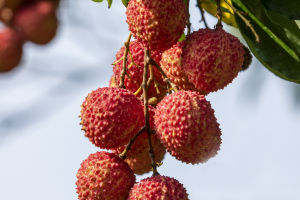Pistacia vera Linn, commonly known as the pistachio tree, is a fascinating and beloved tree with a rich history and a delicious gift to offer—the pistachio nut.
In this article, we will explore the many aspects of Pistacia vera, from its origins and cultivation to its health benefits and culinary uses.
1. Origins and Distribution
Pistacia vera is native to the arid regions of Central Asia and the Middle East. It has been cultivated for thousands of years, and today, it's grown in various parts of the world. The primary pistachio-producing countries include the United States (particularly California).
2. The Pistachio Tree
Appearance: The pistachio tree is a small deciduous tree or shrub that can reach heights of up to 33 feet (10 meters). Its branches are adorned with pinnate leaves and small clusters of greenish flowers.
Cultivation: Pistacia vera thrives in regions with hot, dry summers and cold winters. It's well adapted to these harsh conditions and can tolerate both high temperatures and occasional frost.
3. Pistachio Nuts
Nut Harvest: The pistachio tree produces distinctive seeds, commonly referred to as pistachio nuts. These nuts have a hard, beige-colored shell that splits open to reveal the pale green kernel within.
Culinary Uses: Pistachios are a versatile culinary ingredient. They are enjoyed roasted and salted as a snack, used in baking, or incorporated into various dishes, including ice cream and Middle Eastern cuisine.
4. Health Benefits
Nutritional Value: Pistachios are nutrient-dense, containing healthy fats, protein, dietary fiber, vitamins (like B vitamins), and minerals (such as potassium and magnesium).
Heart Health: Regular consumption of pistachios has been associated with improved heart health, as they can help reduce bad cholesterol levels.
Weight Management: Surprisingly, pistachios may aid in weight management as their shells can serve as a natural portion control aid.
Antioxidant Properties: They are rich in antioxidants, which can help combat oxidative stress and inflammation.
5. Culinary Delights
Savory and Sweet: Pistachios find their way into a wide range of dishes. They add a delightful crunch and flavor to salads, pilafs, and even as a crust for meats. In desserts, they're a beloved ingredient in baklava, gelato, and cakes.
Pistachio Oil: The oil extracted from pistachios is also used in cooking, bringing its unique flavor to various dishes.
6. Symbolism and Tradition
Cultural Significance: Pistachios hold cultural and symbolic significance in several countries. They are often offered as a sign of hospitality, and in some cultures, they symbolize good luck and happiness.
Historical Use: The historical roots of pistachios can be traced back to ancient Persia, where they were highly valued.
They have been enjoyed for millennia and were even mentioned in the Bible.
7. Conservation and Sustainability
Challenges: Despite their adaptability, pistachio trees face environmental challenges, including drought and habitat loss.
Sustainable Practices: Many pistachio growers are adopting sustainable farming practices to reduce water usage and environmental impact.
8. Fun Facts
Red Pistachios: At one time, pistachios were dyed red to cover blemishes on the shells. However, this practice is largely obsolete today.
The Largest Producer: The United States, particularly California, is now the largest producer of pistachios worldwide.
In conclusion, Pistacia vera Linn, the pistachio tree, is a remarkable species with a storied history and numerous contributions to the culinary world. From its origin in arid regions to its versatility in the kitchen and its health benefits, the pistachio has earned its place as a beloved and iconic nut, enjoyed in a variety of dishes and snacks across the globe.


